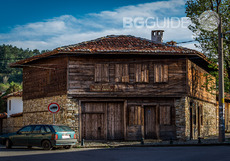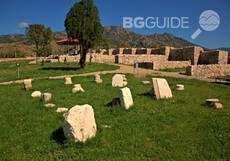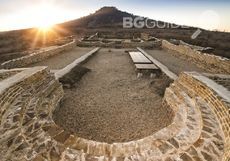House-museum "Hadzhi Dimitar"
The exhibition in the house of Hadzhi Dimitar tells the story about the life and work of the brave “voivoda”/bulg. Military commander/ who died for the freedom of Bulgaria.
A center of the haidouk resistance movement during the Bulgarian Revival
Memories of hundreds of brave Bulgarians, their heroic attitude and exploits, boldness and unwavering faith. It is what kept the patriotic spirit, yearning for freedom and hope alive in the long years of the Ottoman rule. Many of these Bulgarians were born in Sliven.
The sub-Balkan town got the name "City of 100 Voivodes" ("Voyvodi"-Haidouk leaders) during the National Revival thanks to these dedicated fighters. With a rich history and traditions, the city has developed over the centuries as a wealthy handicraft and cultural center. Well-known since ancient times, its glory was reestablished in early Christianity, the Middle Ages and during the Ottoman when in the first centuries the city became center of the Haidouk resistance movement (“ the Bulgarian Hayduts”). Sliven and its surrounding area are infamous for their revolutionaries - Hadzhi Dimitar, Panayot Hitov, Georgi Rakovski, Philip Totyu and many more were born there.
Hadzhi Dimitar (a.k.a. Dimitar Nikolov Asenov) is among the most prominent Bulgarian voivodes. Born in 1840 in Sliven, at the age of 22 he became a haidouk leader and wandered through the Balkan Mountains with his band of revolutionaries. He did fight for freedom till his last breath, six years later. In honor of his death, Hristo Botev wrote the poem "Hadzhi Dimitar". In Sliven, the house, where Hadzhi Dimitar was born – a museum nowadays – is open to visitors. Built in the late 18th century, its traditional interior is now fully restored - the living room, kitchen and typical Sliven wine cellar; the room, where he was born, etc. A vast exposition, dedicated to the commander and his associate Stefan Karadzha is presented as well - firearms and side arms, photos, documents and etc. The historic house-museum is included in the list of the “One hundred National travel sites”.
In Sliven, other historical sights, keeping the memories of heroic and rebel times alive are the “Pantheon of Georgi Rakovski” and the” Museum of Kotlenskite Vazrozhdentsi” ( lit. “Museum of Kotel’s Renaissance men”.) The exhibition traces the feats and achievements of more than 200 heroes born in the region – enlightened Renaissance men, educators, rebels and revolutionaries.
At the Pantheon, the remains of the great revolutionary Georgi Sava Rakovski are placed in marble sarcophagus. There’s a copy of his sword exhibited, too.

The exhibition in the house of Hadzhi Dimitar tells the story about the life and work of the brave “voivoda”/bulg. Military commander/ who died for the freedom of Bulgaria.

"Tuida" is a late antique and medieval fortress...

Echoes of glorious ages past still linger in the region of Yambol thanks to its greatest glory - the National Archaeological Reserve "Kabyle".